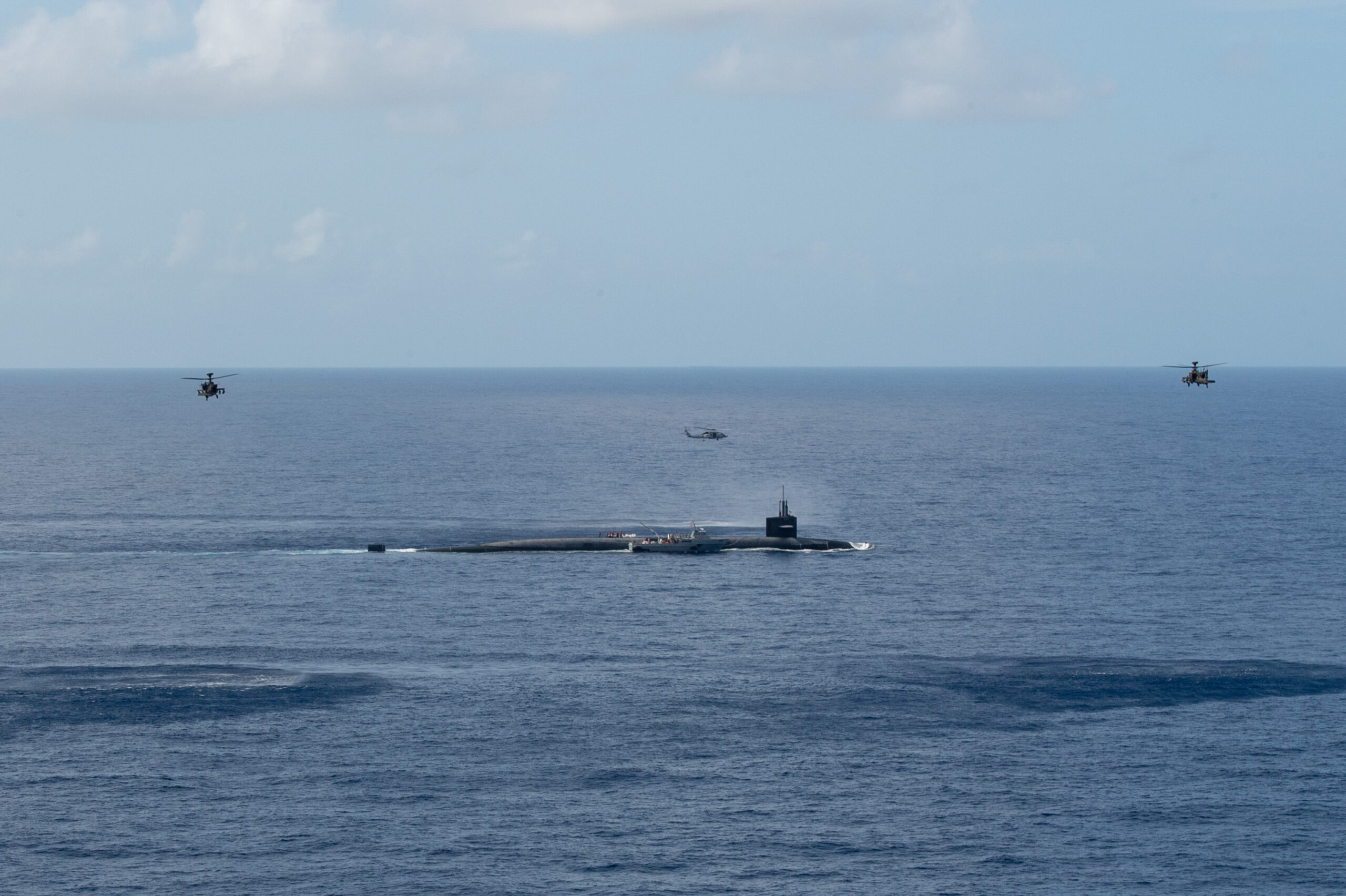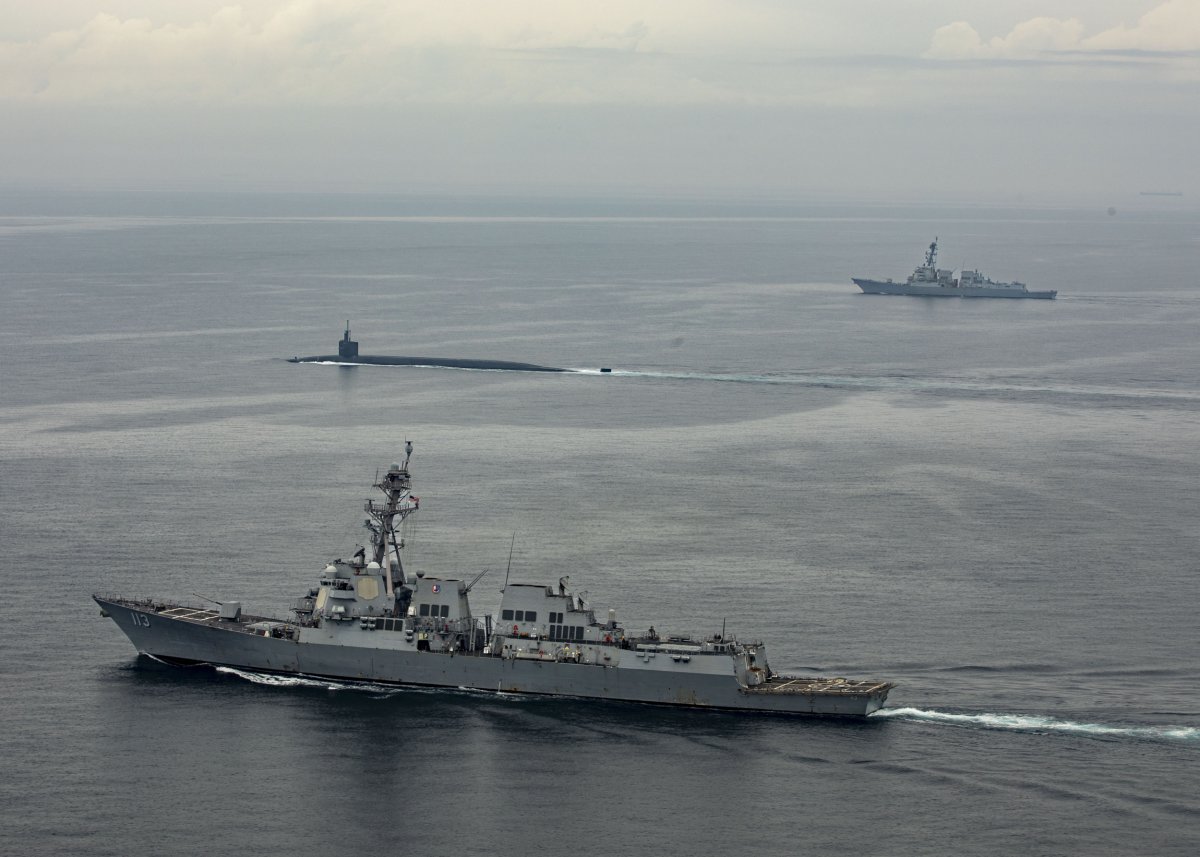
A United States submarine, USS Kentucky, which is capable of firing nuclear missiles, carried out an armed air escort exercise with helicopters in the Pacific Ocean last month.
Why It Matters
The Kentucky is one of the 14 Ohio-class nuclear-powered ballistic missile submarines in service with the U.S. Navy. Each submarine, often referred to as a “boomer,” can carry up to 20 ballistic missiles armed with nuclear warheads, capable of striking targets over 7,456 miles away.
The “boomers” are the most survivable leg of the U.S. nuclear triad, which includes strategic bombers and land-based intercontinental ballistic missiles, according to the Pentagon, because of the extreme difficulty in detecting submarines on deterrent patrols underwater at any given time.
The U.S. Air Force, which is responsible for the other two legs of the country’s nuclear triad, validated the readiness and capability of its nuclear-capable bomber and intercontinental ballistic missile fleets through an exercise and a test last month.
What To Know
A pair of U.S. Army AH-64 helicopters and a U.S. Navy MH-60S helicopter, as well as a submarine support vessel, were seen escorting the Kentucky during the routine armed air escort drill on April 24, according to a set of photos released by the U.S. Navy on May 2.
Mass Communication Specialist 1st Class Ryan Riley/U.S. Navy
It was not clear where the exercise took place, the U.S. Navy saying that it was held at an “undisclosed location.” It was also unclear whether the Kentucky, which is homeported at Naval Base Kitsap in Bangor, Washington state, carried any missiles during the drill.
It was the first armed air escort exercise employing helicopters, the U.S. Navy Submarine Group 9, which exercises administrative control authority for assigned submarine commands and units in the Pacific Northwest region, revealed in a Facebook post on May 2.
“Integration between services is a force multiplier, allowing our strategic forces to deter, and if necessary, defeat our adversaries in the maritime domain,” the post read, adding that the drill was built upon past events to enhance interoperability during multi-platform operations.
This was not the first time America’s nuclear-capable submarines have conducted an armed air escort exercise. On May 6 last year, the Kentucky‘s sister ship, USS Nebraska, transited the Strait of San Juan de Fuca in Washington state escorted by an A-10 attack aircraft.
Such force protection exercises come as the U.S. Navy is sending its ballistic missile submarines to foreign countries for visits, according to the Federation of American Scientists, a message of deterrence conveyed by the increased visibility of the subs.
One such visit was conducted by the Kentucky, which arrived at Busan in South Korea on July 18, 2023. The submarine was seen escorted by destroyers USS John Finn and USS Ralph Johnson as it sailed to the port, official released photos show.

Mass Communication Specialist 2nd Class Samantha Oblander/U.S. Navy
What People Are Saying
The U.S. Navy Submarine Group 9 said: “The U.S. Navy’s fleet of ballistic missile submarines are the most-survivable leg of the nuclear triad. As the tip of the spear for strategic deterrence, [ballistic missile submarine] operations demonstrate the flexibility, survivability, readiness, resolve, global reach and capability of our undersea force.”
Tom Shugart, a former U.S. Navy submariner and an adjunct senior fellow at the Center for a New American Security, told Newsweek: “I’m confident that [the naval escorts] are sufficient to ensure the security of our [ballistic missile submarines], as they are arguably our most vital naval platforms.”
What Happens Next
It remains to be seen whether the American ballistic missile submarine fleet will conduct any port visits in the Western Pacific Ocean this year, where nuclear-armed China and North Korea continue to pose threats to the U.S. and its allies, Japan and South Korea.
